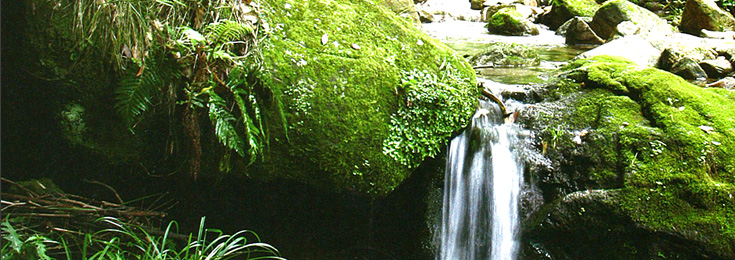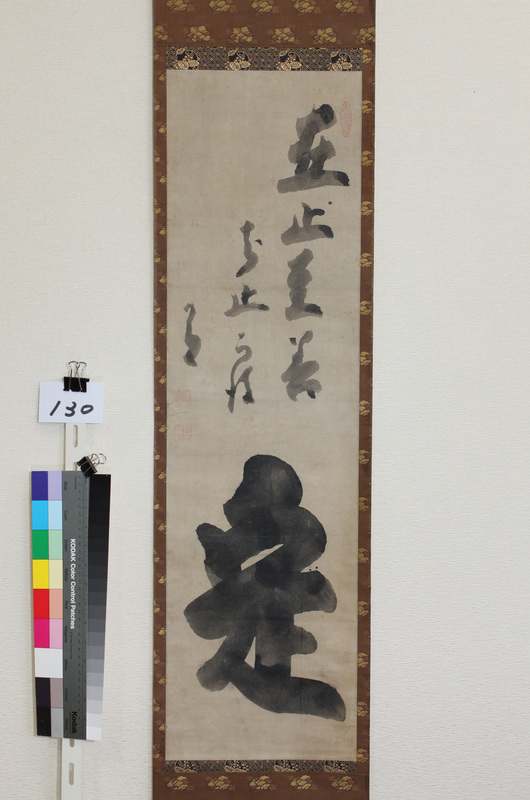
Internet gallery of calligraphy in the Institute collection
The Institute for Zen Studies has over 350 scrolls in its collection. A periodically renewed selection of especially outstanding works will be displayed on this site.
Samadhi 定

| Date | 2011/9/22 |
|---|---|
| Author | Hakuin Ekaku (1685-1768) |
| Details | Chōshōdō 130 Jō (Samadhi) 定在止至善知止而後定有 Size: hansetsu Paper: 26.0 x 93.5cm Mounting: 29.7 x 171.0cm This piece was displayed during the 2011 Suiō Genro exhibition. Hakuin Ekaku, revered as the reviver of the Japanese Rinzai school, was born in the station town of Hara on the Tōkaidō highway, just south of Mount Fuji. At the age of fifteen Hakuin became a monk at the nearby temple Shōin-ji, and after a time set off on a pilgrimage to various masters in the central parts of Japan. At the age of twenty-four he had a profound awakening experience upon hearing the sound of a temple bell, but, not yet satisfied, he continued on his pilgrimage. Following a period of illness that he cured using introspective (naikan) techniques, he experienced a deeper awakening under the guidance of Dōkyō Etan in Iiyama, in the mountains of present-day Nagano Prefecture. Following further training he returned to Shōin-ji in Hara, where he guided scores of monks and also taught methods for restoring and maintaining health. He criticized what he saw as false meditative practices, and developed his own innovative approaches to Zen training. He spread the Zen teachings not only through lectures and writings but also through his voluminous paintings and calligraphies. His “Zazen Wasan” (Song of zazen) continues to be widely used at temples and meditation retreats. All present-day Japanese Rinzai Zen masters are descendents of Hakuin. |






